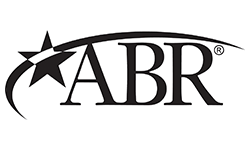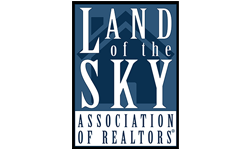Black spots on the wall? Those might not be scuff marks…

In This Article
- Common signs your home has mold
- Hidden signs of mold
- Tips for mold prevention
- How to safely remove mold from your house
You’ve heard it time and time again: mold in the home is never a good sign. Odds are, in the same conversation, you’ve also heard that as soon as you spot the unwanted infestation, removing said mold becomes a top priority.
“Mold in your home isn’t just unsightly, it’s a health hazard,” says Mark Brunke, the senior plumber at John the Plumber in Florida. “Breathing in mold spores can lead to allergies, respiratory issues, and even more serious health problems.”
On top of the health issues mold can cause, it is unsightly to see, as Brunke mentioned. No one wants to look at the ceiling or wall and see icky brown or black dots covering the area. That’s why the best course of action to take when dealing with mold is to remove the issue as soon as possible to prevent structural damage or health concerns.
But, tackling mold isn’t that easy. The hardest part in dealing with this home issue is knowing you have a problem in the first place since mold can sometimes stay hidden. That’s why we spoke to four experts in the country for their top tips at noticing signs of mold within the home, how to prevent mold from developing, and how to safely remove it for a safer environment.
- Mark Brunke is the senior plumber at John the Plumber in Pompano Beach, Florida.
- Drew Hamblen is the President of Fairview Custom Homes, a luxury home builder in the Carolinas.
- Cullen Powell is the owner of Prograde Builders in Memphis, Tennessee.
Common Signs Your Home Has Mold
Moisture or Condensation
High moisture rooms such as the bathrooms, basement, and crawl space tend to see mold growth the most. That’s because these rooms typically experience high moisture or condensation levels that, when meeting with dry surfaces, can cause mold to grow more quickly.
“Anywhere you have moisture or water leaks you can and almost always will have mold,” says Powell. “Look under your cabinets where plumbing fixtures are installed for signs of moisture. If your house has a conventional foundation, inspect the crawlspace for any signs of moisture. Any moisture in the crawlspace is a very bad sign that should be addressed immediately as it can lead to a rotten foundation which can cost tens of thousands of dollars to repair.”
Other areas of the home to scout for mold due to moisture or condensation would be under your sinks, the window sills, or laundry room.
Visible Mold
Sometimes the easiest way to catch a mold infestation is actually see it. Indoor mold typically has three colors: black, brown, or a blue-green color. Visible mold will show up on your ceilings, walls, or flooring.
Here are three common indoor mold types to look for in high-moisture rooms:
- Cladosporium: Found with the other types of mold indoors, Cladosporium, a brown-black or green mold type, usually grows along your floors, walls, leaky pipes, or anywhere else that has high moisture levels.
- Penicillium: Penicillium has a blue-green appearance mostly found in your basements or around leaks, but may also show up on your walls and floors, and even your furniture.
- Aspergillus: This mold type usually sports a black color on the surface with a white or yellow color underneath. You can find aspergillus growing in your walls, ceilings, flooring, baseboards, or even your HVAC system.
Water Leaks
Other than certain rooms (like the bathroom and basement) having poor ventilation and being moisture-prone, water leaks is another hidden cause of mold growth. Obviously, water leaks produce excess moisture that, when left untreated, can cause the hazardous mold to grow and spread.
Unfortunately, it’s possible for your home to have a water leak and you not know it. That’s why Drew Hamblen of Fairview Homes says proactive measures are key to knowing the condition of your pipes and to find leaks before they sprout into a bigger issue.
“To locate water leaks, which are often the source of mold, homeowners should regularly inspect areas around windows, roofs, pipes, and faucets for any signs of moisture or water damage,” he tells us.
Wall Discoloration
Have your walls been looking dingy lately? No, you’re not going crazy. Wall discoloration is actually a hidden yet visible sign your home has mold. If you’ve been seeing dark spots that look like yellow or brown stains along your walls and wallpaper with slight texture, you can about bet it’s mold. These stains
“Mold comes in different colors and textures, from black and green to white and yellow. If you spot any patches on surfaces like walls or ceilings, it’s likely mold,” Brunke says.
Warped Paint
Speaking of wall discoloration, with mold being a byproduct of high moisture levels, warped paint is another for-sure sign to look for when dealing with mold.
As moisture begins to build in the room, your paint will start to bubble from the softening of the wall due to the higher humidity levels. Along with warped paint, you might start to see the spots of mold showing up as the wall begins to build and build with moisture.
Areas in the home where warped paint is typically present consists of the bathroom, kitchen, or areas longs the windowsill.
Musty Smell
Sometimes you don’t see mold, you smell it. And as one would guess, mold does not have a pleasant smell. “That musty smell? It’s a sure sign of mold or mildew,” says Powell. “It’s caused by the release of compounds produced by mold and bacteria. Fix the moisture issue and improve ventilation to get rid of it.”
If you begin to smell a musty odor in your home, it’s time to find the problem area immediately. The release of compounds can begin to cause headaches, nausea, fatigue, and other heath concerns, according to the U.S. Environmental Protection Agency.1
Health Symptoms
Part of the big push for finding mold pronto as soon as you start to notice the signs is to keep the environment inside safe. “Mold can trigger allergies, asthma attacks, and other respiratory problems,” Brunke says. “It’s especially risky for kids, the elderly, and anyone with a weakened immune system.”
The State of Rhode Island Department of Health says that consistent exposure to mold spores can cause health symptoms such as watery eyes, a runny nose, difficulty breathing, and other respiratory issues2.
If you or someone else in your household begins to develop these symptoms, it’s not a bad idea to do a thorough check of your home’s pipes and rooms to see if you can notice any signs of mold that may be triggering these health effects before it gets too severe.
Hidden Signs of Mold
Rotten Smell
There may be several reasons as to why your home stinks, and sadly, that rotten egg scent could be from mold. Specifically in your laundry room, mold releases a hydrogen sulfide gas that creates a sulfur-like smell when mixed with the excess moisture that signifies mold is present and hidden.
Start looking around the high moisture rooms of your home for any visible signs of mold like leaks, wall stains, are visible mold patches. Find the room where the rotten egg smell is the strongest and begin there, also remembering to look in the crevices and furniture if there are upholstery pieces in the room too.
Allergic Reactions
We’ve already mentioned that mold can cause some health concerns to flare up, like asthma or headaches, but another possibility is an allergic reaction.
The Asthma and Allergy Foundation of America states that mold spores can cause hay fever-like symptoms in individuals who experience an allergic reaction to the present fungus3. These symptoms can include itchiness in the eyes, throat, and nose; congestion; cough; mucus; and more.
“Certain types of mold are perfectly safe. There is natural mold in the air we breathe every day and also inside our homes. It is a natural part of our environment,” says Powell. “Other types cause respiratory and neurological issues and can be dangerous and even deadly.”
If you have an out-of-the-blue allergic reaction in your home, it could be because of mold. Seek medical help immediately and contact a professional to remove the mold from your home.
Structural Damage
“Some of the most common signs of structural damage involving moisture leading to mold can include cracks in walls, soft spots in floors, and uneven or sloping floors that were previously flat,” Powell tells us.
Structural damage is a big sign all of our experts say indicates mold is present inside your home. Signs such as cracks in the foundation or holes from soft spots in the walls, ceilings, or floors are all signs that moisture has been sitting in your home for a while and turned into mold.
Tips for Mold Prevention
With all the drawbacks and health hazards mold produces, it’s no wonder that prevention is on nearly every homeowner’s checklist. The good news is that preventing mold from developing in your home isn’t anything extensive. All it requires is controlling moisture levels with proper ventilation in high-humidity rooms of the house.
“To prevent mold, controlling indoor moisture levels is key,” Hamblen says. “In our projects, we advocate for the use of dehumidifiers in areas prone to dampness, ensuring that bathrooms and kitchens are well-ventilated, and incorporating mold-resistant materials like mold-resistant drywall or paints in the construction of homes.”
Another big prevention tip Hamblen and Powell both stress is ensuring that your home’s exterior properly directs water away from the home and not towards it. “This can be done through well-maintained gutters and a sloped landscape can prevent water from pooling around the foundation, another common cause of mold,” says Hamblen.
Lastly, Brunke says keeping an eye on water leaks and option for mold-resistant materials in your home are two other prevention methods that will pay off in the long run. “Fix leaks as soon as possible, and use exhaust fans in the bathrooms, kitchens, and basement. Invest in a dehumidifier if you have to, and opt for mold-resistant materials like drywall and paint in vulnerable areas.”
How To Safely Remove Mold from Your House
Mold might seem intimidating to handle if you’ve noticed multiple signs on our list, but rest assured that there are DIY methods for removing the fungus before you need to call in the pros.
“For mold removal, I’ve learned that small areas of mold can often be handled by homeowners with a solution of water and detergent. However, it’s crucial not to disturb large areas of mold to avoid spreading spores throughout your home,” Hamblen says. “Always wear protective gear, like gloves and masks, when dealing with mold.”
To remove small patches of mold, start by mixing together a 50/50 solution of water and cleaning detergent. Fill a spray bottle with the solution and spray the affected area of your home. Let the solution sit for at least two to three hours before scrubbing the area and rinsing.
When scrubbing a moldy area, use gentle force to keep the wall intact in case it’s softened from the moisture.
For larger areas of the home that are covered in mold, or if you’re not sure where the infected area is to begin with, it’s better to call a professional instead of handling the problem yourself. Bunke agrees. “If mold covers a large area, is causing health issues, or if you’re unsure how to handle it safely, it’s time to bring in a professional. They have the expertise and equipment to tackle the problem effectively.”




